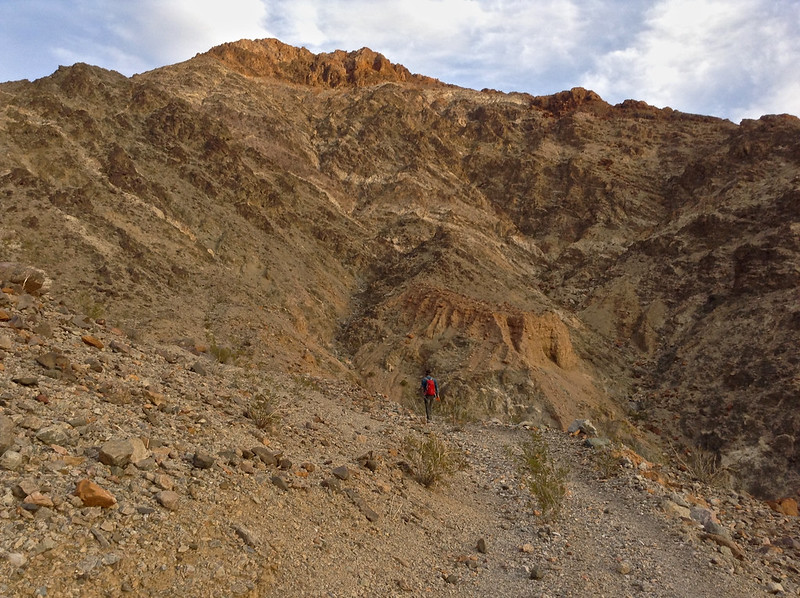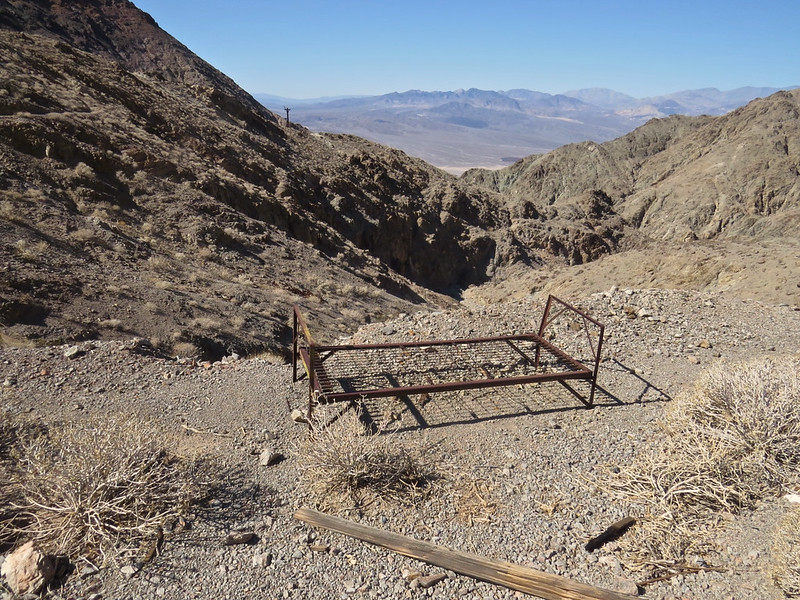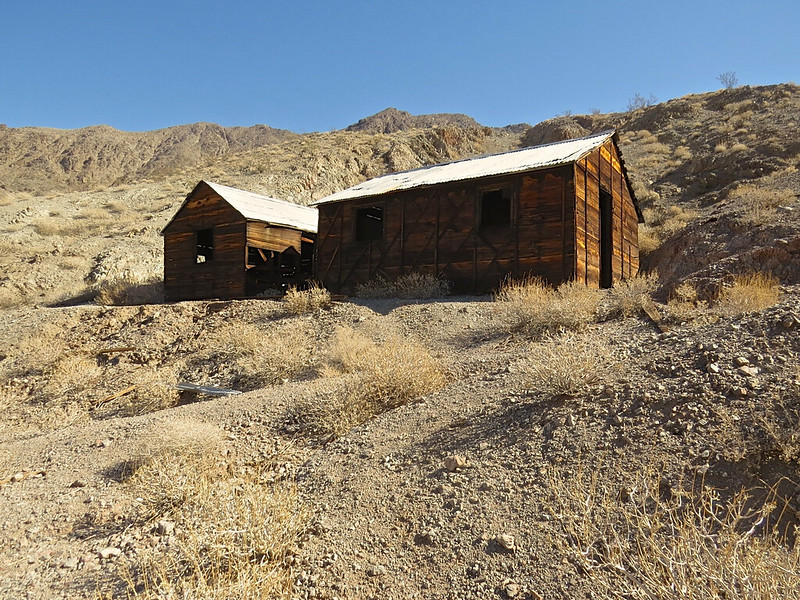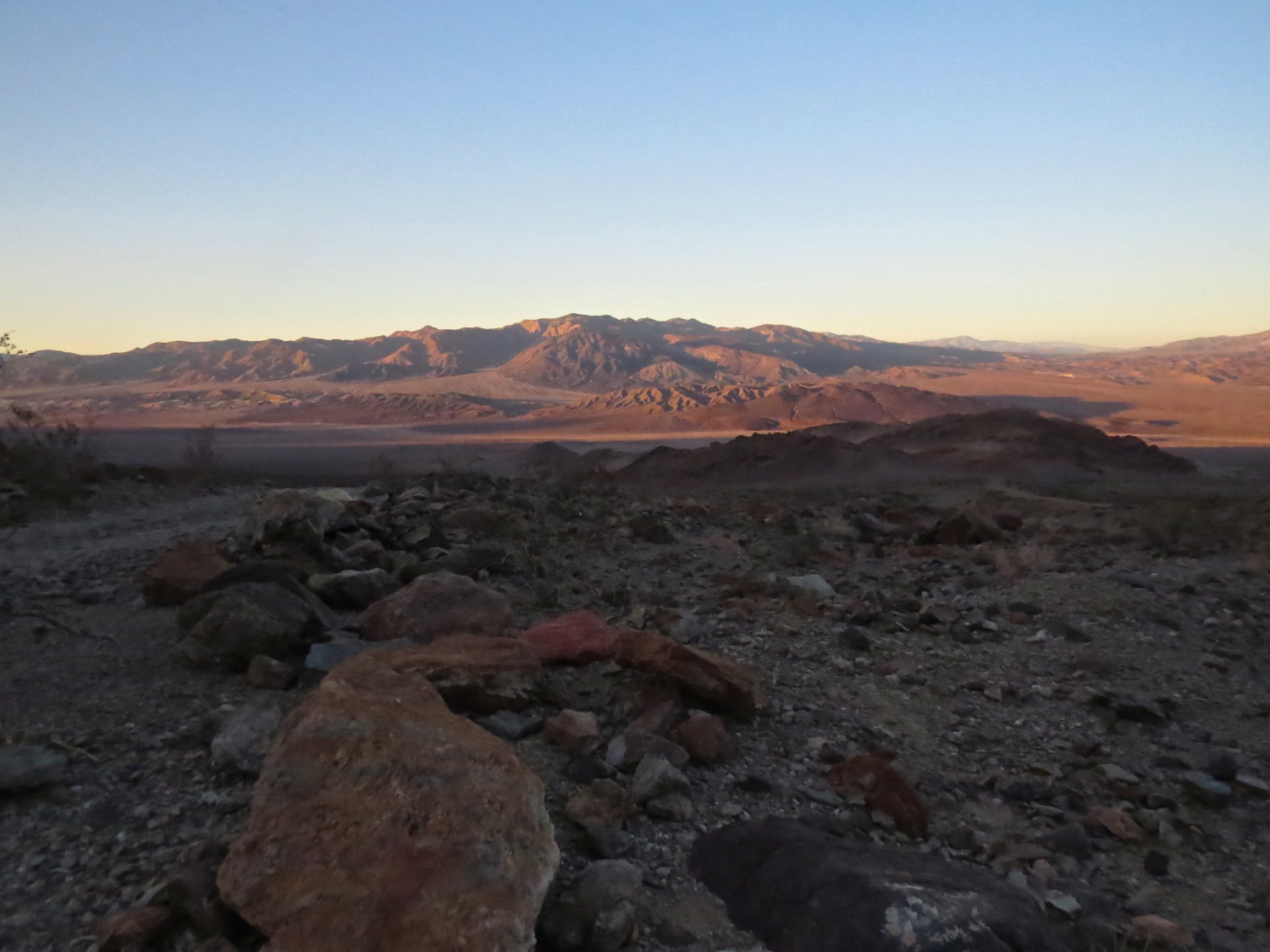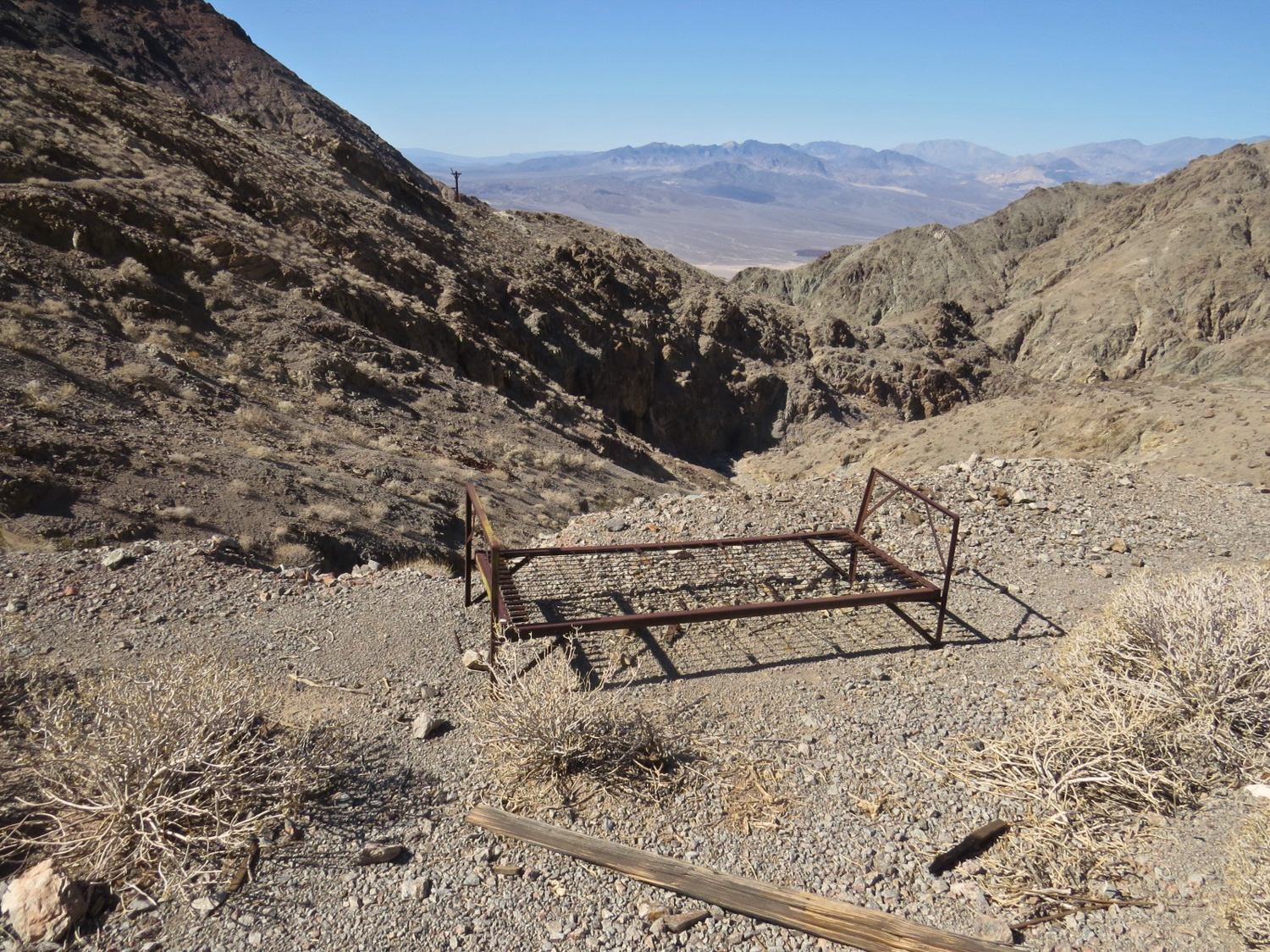For every colorful story of lucky prospectors and rich strikes in Death Valley mining history, there are ten quiet stories of lost fortunes and gutted hills. The Ashford Mine got its start in 1907 when Harold Ashford prospected in the area. Most of the land was already claimed by the Key Gold Mining Company, but they hadn’t done the annual assessment work necessary to keep the company claims. Harold heard wind of this and began working the claims with his brothers. He was eventually taken to court but won title to the land in 1910. He and his brothers worked the Ashford Mine with no big strikes but enough promise that they were able to lease the mine in 1914 to an investor from Los Angeles, Benjamin McCausland and his son Ross. The McCauslands built a road and a mill, and employed as many as 28 men, but they still weren’t able to break even. They turned the land and equipment back over to the Ashfords. The Ashfords held onto the property and worked and leased it intermittently, but it mostly sat idle. The mine never broke even and was eventually inactive for good in the 1950s.
Despite the inauspicious history, the ruins are picturesque and well-preserved, a gold mining camp hidden high in the Black Mountains of Death Valley. To reach them requires a steep, scenic hike through Ashford Canyon, a colorful canyon of jumbled rocks. Walking the canyon, it’s easy to see how much effort it took to develop this place, far from civilization and infrastructure.
The first time I tried to hike Ashford Canyon, I gave up before I got to the Ashford Mine camp. The old road has been mostly washed out, and the steady elevation gain against the high canyon walls can make it hard to gauge how far you’ve gone. I was fooled by the two mile distance and started out too late, too close to sunset. I turned around before reaching the camp wondering if I had passed it or missed something. When I asked around a few months later a local told me, “You kinda have to just know where you’re going.”
The second time I camped at the trailhead, a beautiful quiet spot I had to myself with a perfect golden hour over Death Valley. I got a bright, early start for the hike.
The trail starts on the east side of the small parking area, marked with a wilderness boundary marker. It quickly drops down into the wash of Ashford Canyon. Soon (after about .3 miles) look for the remains of the old mining road on your left. The road was built in 1915 and has suffered some major washouts. You might have to adjust your expectations for what a road looks like (here, a flat place running along the hill). If you miss the turn, you’ll end up at a high fall in less than half a mile. For rock climbers, this might be a welcome obstacle. The fall can be climbed with equipment and rock climbing skills. If you follow the old road, it bypasses the wash to meet the main canyon above the fall.
Continue to follow the canyon and pieces of the old road as its remaining segments appear and disappear. At times they’re hard to tell from the beds of conglomerate stone that blanket sections of the canyon floor. The canyon scenery is beautiful with sand-gold walls that reflect the shifting sunlight and ancient metamorphic rock, some of the oldest exposed rocks in Death Valley. The beds of conglomerate stone are full of many textures and colors with mica, gneiss, quartz, and feldspar. They’ve been sculpted by water into basins and polished mosaics.
As you hike, look for two intersecting side canyons. The first side canyon spurs off the main canyon at about mile 1.2. The second side canyon intersects at about mile 1.6, the cue you that you’re close to the mine road and camp. The road resumes on the right side of the wash at about mile 1.8. After a short distance it swings across the wash and intersects climbs the the canyon on north (left) side. Follow it to climb the steep, .3-mile ascent up and over the canyon wall.
The Ashford Mine camp is a strangely moving sight, perched in its forgotten ring of hills, exposed to the wind and relentless sun. After the camp comes into view, the road winds along the hillside, past old cabins and dugouts, still standing and partially furnished, telling of life in a lonely mining camp.
The Ashford Mill was built in 1915 on the valley floor to process ore and represented the mine’s heyday. The ruins of the mining camp have been fading in the sun since the 1950s when the mine was shuttered for good. Take time to explore before you make the trek back down the canyon. On the way out, check out the Ashford Mill ruins across the Badwater Road.
Tags: Furnace Creek, geology, ghost camp, ghost town, hikes, historic cabins, history, Mojave Desert, rock climbing, ruins, Shoshone



